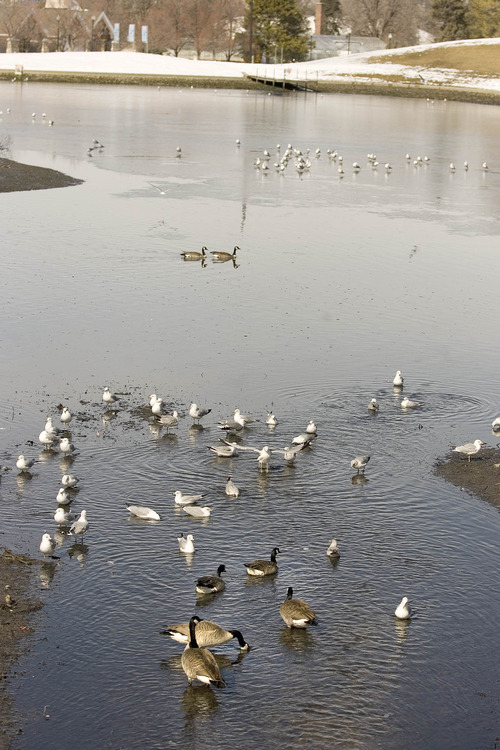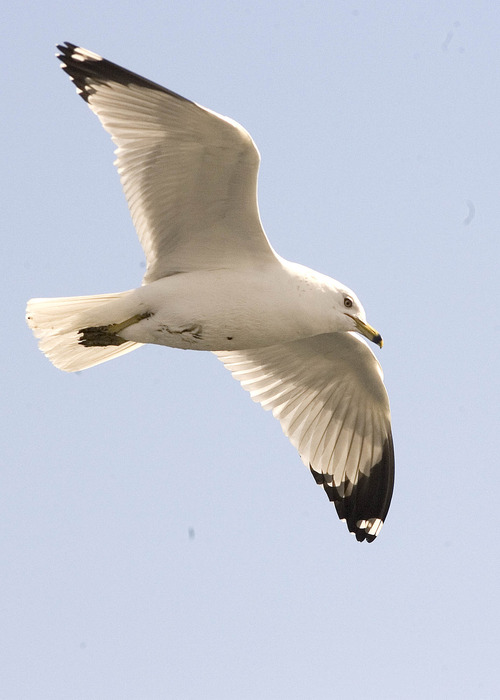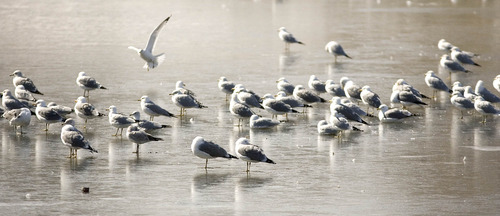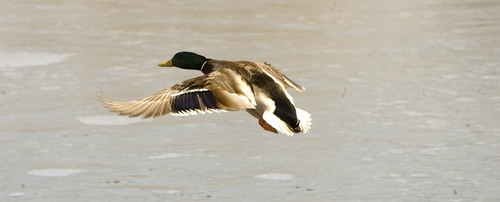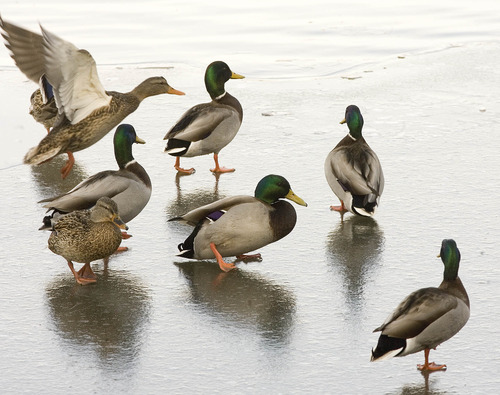This is an archived article that was published on sltrib.com in 2013, and information in the article may be outdated. It is provided only for personal research purposes and may not be reprinted.
When winter's low temperatures freeze most ponds and lakes, waterfowl seek out rare splotches of open water where they can rest and feed. Thus, places such as Liberty Pond's small pond provide valuable bits of bird paradise.
The pond in the heart of Salt Lake City is not always filled with water during the winter. In fact, Tracy Aviary executive director Tim Brown isn't exactly certain why the flood-control retention pond has water in it this year.
But he and Carolina Roa, the aviary's conservation scientist, are not complaining. They can use binoculars from their second-floor aviary office to observe the various types of birds taking advantage of the pond's open water.
Since starting a count in December, they have identified 36 species using the park pond, nesting in trees or even visiting the aviary itself. Roa and Brown, who have documented more than 80 species of birds, say the number of species will increase as the spring migration season begins.
A female bald eagle came to the aviary area for the second straight year. She often nests in trees above the pond and has been observed fishing. That bird sometimes joins the aviary's captive bald eagles for a meal.
California gulls, Canada geese and mallards commonly use open-water ponds such as those in Liberty Park, Sugar House Park or Willow Pond near Murray during the winter months. But the aviary staff have been surprised at some of the less-common winter visitors.
"We've seen eight new species of waterfowl this year," Roa said. "We've had hooded and common mergansers, common golden eyes and ringed-neck ducks."
Lesser scaup, brown creepers and ruby-crowned kinglets also have paid visits.
"This is a green pocket in the midst of a cement jungle," Roa said. "Parks are important."
"The number of waterfowl is surprising," Brown added. "You put water there, and the birds find it. They see something special. California gulls, mallards and geese are birds more used to humans. The others stay far away."
That's why it was fun to walk near the pond with Roa, who knows her bird species. She handed me her binoculars and pointed out some of the more unusual species, including a beautiful male merganser surrounded by several females. It was thrilling to see so much wildlife in the heart of Utah's capital city.
Brown said the pond also holds a surprising number of fish in terms of both species and amount. When it was drained after the Chevron oil spill, there was even a northern pike found.
The aviary is trying to use its new facilities, some of which are still being built, as well as surrounding areas in a variety of interesting public education projects. Roa is trying to recruit people to be "citizen scientists" to help with research projects.
The aviary also is sponsoring some bird walks through the late winter and early spring. Some include "birding by ear" workshops where participants are taught to identify birds that use Liberty Park and the surrounding area by their songs. Information on those is available at the aviary website, http://www.tracyaviary.org.
"You can hear their distinctive songs," said Roa. "It's awesome to know they are there by hearing them."
Thus, not only is it possible to visit the aviary and see hundreds of its captive birds, this winter has given visitors a chance to see winter feathered visitors who have discovered Liberty Park offers open water this year.
Twitter: @tribtomwharton


